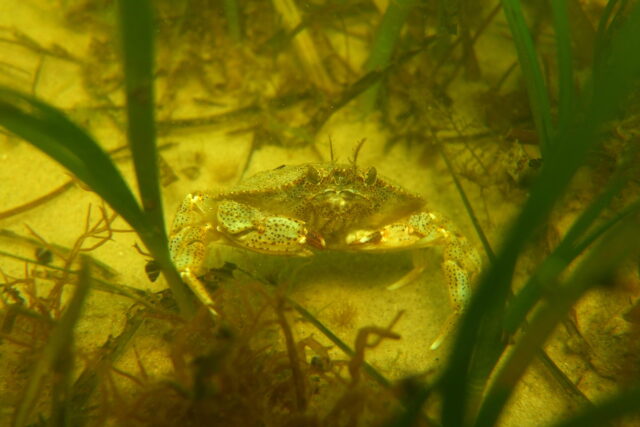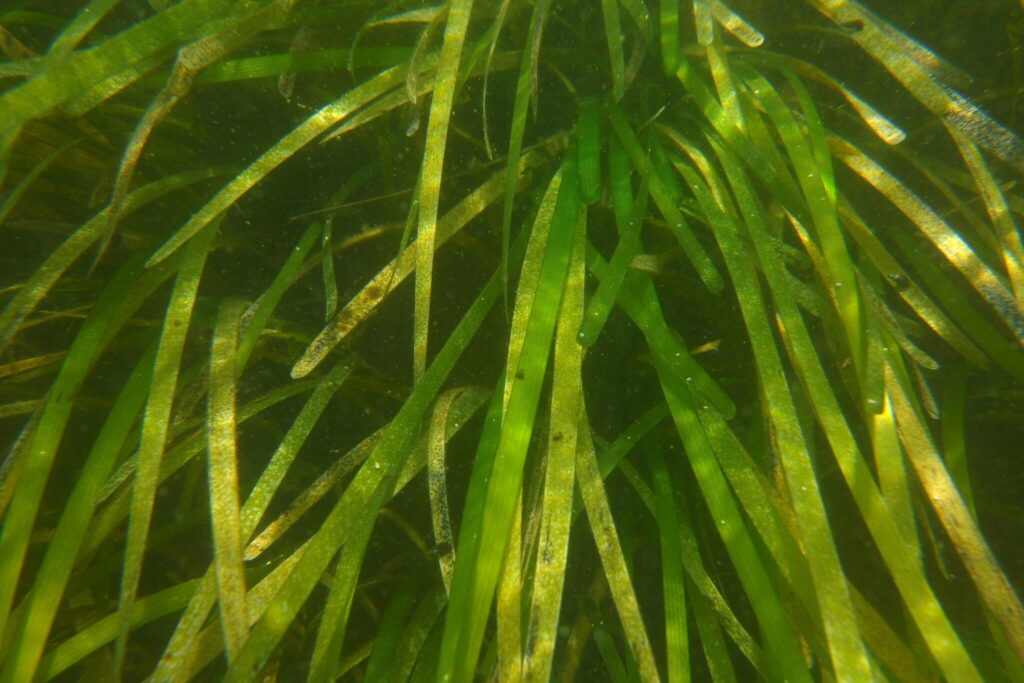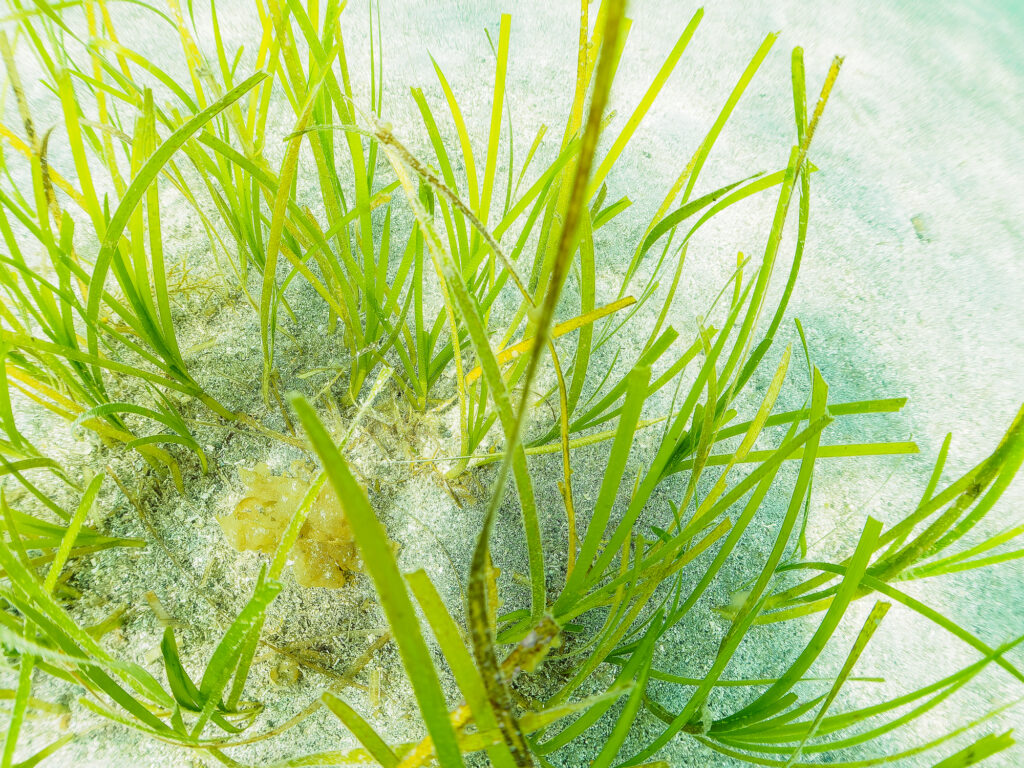In late September, seagrass ecologist Alyssa Novak pulled on her neoprene wetsuit, pressed her snorkel mask against her face, and jumped off an oyster farming boat into the shallow waters of Pleasant Bay, an estuary in the Cape Cod National Seashore in Massachusetts. Through her mask she gazed toward the sandy seabed, about 3 feet below the surface at low tide, where she was about to plant an experimental underwater garden of eelgrass.
Naturally occurring meadows of eelgrass—the most common type of seagrass found along the East Coast of the United States—are vanishing. Like seagrasses around the world, they have been plagued for decades by dredging, disease, and nutrient pollution from wastewater and agricultural runoff. The nutrient overloads have fueled algal blooms and clouded coastal waters with sediments, blocking out sunlight the marine plants need to make food through photosynthesis and suffocating them.
The United Nations Environment Program reports more than 20 of the world’s 72 seagrass species are on the decline. As a result, an estimated 7 percent of these habitats are lost each year.
In the western Atlantic, some eelgrass meadows have been reduced by more than 90 percent in the last 100 years, according to The Nature Conservancy, an environmental nonprofit that works to protect lands and waters around the world.
Now, rising sea surface temperatures caused by global warming are pushing the plant to the brink of extinction. Novak, a research assistant professor at Boston University who has studied eelgrass in New England for more than a decade, and a multidisciplinary team of scientists in different states are trying their best to make sure this does not become reality.
Together, they are working to restore eelgrass populations in coastal parks from Maine to North Carolina using a novel approach that has never been tried before with a marine plant: assisted migration.





 Loading comments...
Loading comments...
